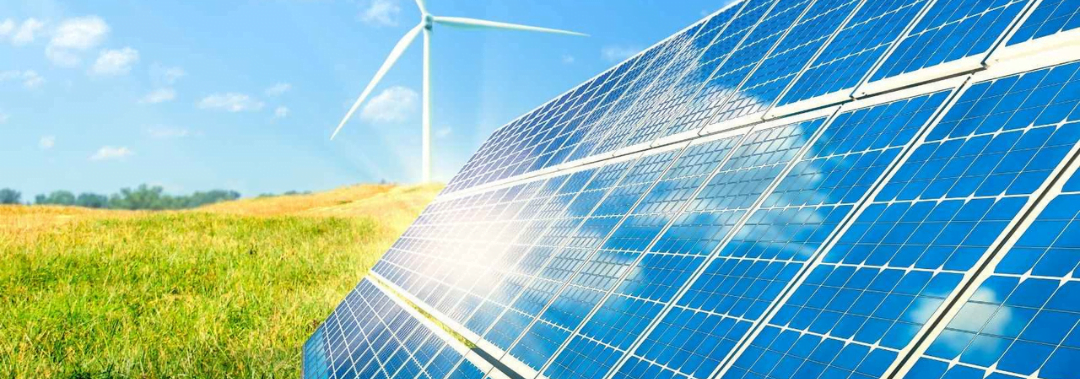Agriculture On-Grid Solar System
Utility-Interactive Solar Photovoltaic System

Looking to reduce energy costs for your farming operations? Interested in sustainable, eco-friendly power solutions? Welcome to Synergy Solar. As a leader in solar power solutions, we specialize in helping the agricultural sector harness clean energy, drastically lowering electricity expenses through the installation of grid-connected solar power systems. Our systems, expertly designed by skilled engineers, use high-quality, durable components to ensure reliable, long-lasting performance.
Our Agriculture On-Grid Solar Systems utilize Grid-Connected Photovoltaics with solar panels installed on barns, farm buildings, or open land, capturing renewable energy from the sun. This power can be used to operate pumps, irrigation systems, refrigeration units, and other vital farming equipment. Any surplus electricity generated is seamlessly fed back into the grid, maximizing the efficiency of the system.
One of the most popular types of solar power solutions for agriculture is the On-Grid Solar System, which operates without the need for battery storage. These systems are not only cost-effective but also easy to design and install, making them a practical choice for farmers looking for efficient energy solutions.
A potential drawback of On-Grid systems is the lack of power storage. Without batteries, excess energy generated during peak sunlight hours is sent back to the grid. When additional power is required, it is drawn from the grid, bypassing the need for battery storage. This is where net metering proves to be advantageous, as it allows system owners to offset their electricity costs by exporting surplus power to the grid and importing it when needed.
In the event of a grid outage, On-Grid solar system users may lose power temporarily, as inverters automatically disconnect from the utility grid for safety reasons.

Advantages of Agriculture On-Grid Solar Power Systems
They are seamlessly integrated with the existing utility grid, allowing users to draw power from both solar panels and the grid as needed. This means there’s no need for costly battery storage, making the initial setup more affordable.
Utility grid is used as a backup when solar power is less.
Financial incentives like net metering can be made use of.
Installation process is very easy
It is the most inexpensive solar power system.
Disadvantages of Agriculture On-Grid Solar Systems
One drawback is their dependency on the grid; during grid outages, these systems typically shut down for safety reasons, leaving users without power. Additionally, without battery storage, surplus energy generated during peak sunlight hours cannot be stored for later use, potentially resulting in wasted energy. Moreover, on-grid systems are subject to fluctuations in utility electricity prices, meaning users may not always see significant savings on their energy bills.
Utility fees can be imposed on them.
You are dependent on grid power. Once it is gone, even the solar power system goes out irrespective of whether the sun is shining or not.

How Agriculture On-Grid Solar Systems Work?
An Agriculture On-Grid Solar System generates electricity through solar panels and is directly connected to the public electricity grid. Here’s a step-by-step guide on how it works:
🔋 Solar PV Panels: Capture sunlight and convert it into direct current (DC) electricity.
🔄 Inverter: Converts DC electricity into alternating current (AC) to power your farm’s electrical systems.
⚡ Grid Export: Excess energy generated by the solar panels is sent back to the grid, earning you credits through net metering.
📊 Bi-Directional Meter: Measures the energy produced by your solar system and tracks how much electricity you send to and pull from the grid.
🔌 Grid Backup: Automatically pulls electricity from the grid when solar energy is insufficient, ensuring your farm remains operational.
Applications of On-Grid Solar Solutions in Agriculture
🌾 Irrigation Systems
Power pumps and irrigation systems with solar energy to ensure a consistent water supply without relying on expensive grid power.
❄️ Refrigeration Units
Use solar power to operate refrigeration units for storing produce, dairy, and other perishable goods, ensuring lower operational costs.
🏗️ Machinery and Equipment
Reduce energy costs for operating tractors, processing machines, and other essential farming equipment by utilizing solar energy.
💡 Farm Buildings
Solar energy can power lights, heating, and cooling systems in barns, sheds, and storage units, helping to lower energy bills.
Key Features of Agriculture On-Grid Solar Solutions
✅ Independence from the Grid
Reduce reliance on grid electricity while enjoying uninterrupted power supply.
✅ Battery Backup (Optional)
Add a battery system to store excess energy for use during low-sunlight periods.
✅ Cost-Effective
An affordable and efficient energy solution for large-scale farms, providing a quick return on investment.
✅ Sustainability
Leverage renewable energy to lower your farm’s carbon footprint and promote eco-friendly practices.
Further Factors to Consider Regarding Solar Power Systems

While selecting the type of solar power system for your location is undoubtedly pivotal, there are additional factors to consider, such as:
Solar Power System Size: The size of the solar power system you opt to install at your location hinges primarily on your energy needs and whether you intend to incorporate battery storage or generate electricity independently. Factors such as your power consumption habits and the amount of sunlight available for generation will influence the ideal system size.
Placement of Solar Panels: Although solar panels are commonly installed on rooftops, there are instances where ground-mounted posts may be utilized. This occurs when the roof is significantly aged, has an unconventional slope, or lacks adequate sunlight exposure.
Fixed vs. Sun Tracking Arrays: Solar arrays come in two varieties: fixed and sun tracking. Fixed arrays are the more prevalent option, being both cost-effective and straightforward to design and install. On the other hand, sun tracking arrays are employed to maximize solar power generation. By dynamically adjusting the angle of solar panels, sun tracking arrays ensure optimal exposure to sunlight, thereby increasing energy yield.
Solar Panel Material: Solar panels come in various materials, including crystalline silicon, monocrystalline, polycrystalline, and thin film. Solar installers possess the expertise to recommend the most suitable material for your solar power needs.
Solar Power System Financing: While some homeowners can afford to purchase a solar power system outright, others may require financial assistance. Loans are readily available for this purpose. Another viable option is leasing, which allows homeowners to enjoy the savings and financial incentives of solar power without the burden of upfront costs.
